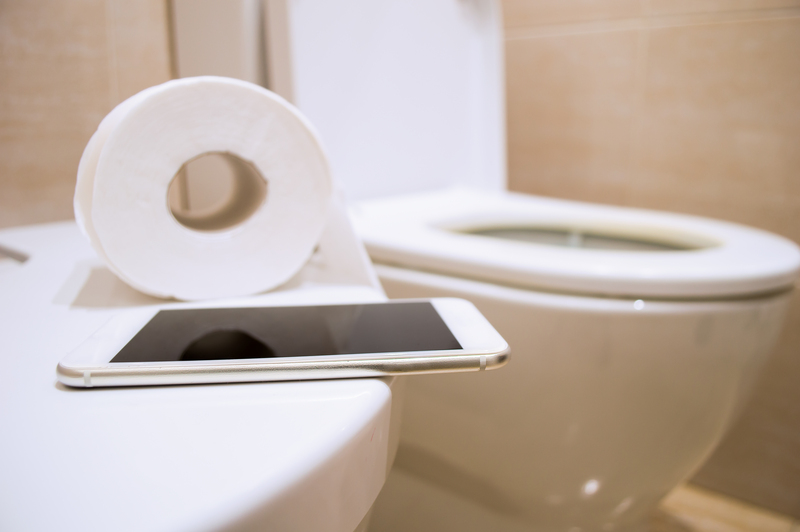Understanding the Impact of Steam Cleaning on Leather Sofas
Posted on 14/09/2025
Understanding the Impact of Steam Cleaning on Leather Sofas
Leather sofas are a popular choice for their elegance, durability, and classic appeal. However, maintaining their pristine appearance requires careful and regular cleaning. With modern cleaning technologies flourishing, steam cleaning has emerged as a trending solution for tackling dirt, stains, and allergens on various surfaces. But is steam cleaning really safe and effective for leather sofas? This detailed article will help you understand the impact of steam cleaning on leather sofas, the potential benefits and pitfalls, and recommended practices for maintaining your luxurious furniture.

Why Is Leather Sofa Maintenance Important?
Leather sofas are an investment that adds sophistication and comfort to any living space. Unlike fabric upholstery, leather is a natural material that demands specific care. Without proper cleaning and conditioning, its surface can become dull, cracked, and brittle over time. Pollutants, body oils, pet dander, spilled drinks, and accumulated dust can all contribute to the deterioration of your sofa if left unchecked.
- Prolongs the sofa's lifespan
- Maintains the look and feel of the leather
- Prevents the buildup of bacteria and allergens
- Protects your health and indoor air quality
Because leather is a unique material, using the wrong cleaning method may cause irreversible damage. This is where the debate over steam cleaning comes into play.
What Is Steam Cleaning?
Steam cleaning is a process that uses hot, pressurized steam to dislodge dirt, grime, and bacteria from various surfaces. Popular for its effectiveness and eco-friendly benefits, steam cleaning is widely used on carpets, tiles, drapes, and more.
- No harsh chemicals required
- Penetrates into crevices and hard-to-reach areas
- Kills germs and dust mites
- Reduces allergens
But when it comes to materials like leather, the impact of steam cleaning raises important questions. Does steam cleaning damage leather sofas? Or can it offer a safe and efficient clean?
How Does Leather React to Steam Cleaning?
Leather is fundamentally different from synthetic or fabric surfaces. It is a porous material, sensitive to both moisture and heat. Understanding this is crucial before applying any steam cleaning process to your sofa.
Positive Effects of Steam Cleaning Leather Sofas
- Deep Cleaning: Steam's heat and pressure can lift embedded dirt, stains, and debris from leather creases and seams.
- Sanitization: The high temperature of steam kills bacteria, viruses, and allergens that may reside on or in your sofa.
- Deodorization: Steam naturally removes lingering odors, leaving your leather couch smelling fresh.
Negative Effects of Steam Cleaning Leather Sofas
- Moisture Damage: Excessive steam can oversaturate leather, causing swelling, warping, or water stains.
- Loss of Natural Oils: The heat can strip away essential natural oils, making the leather stiff, dry, or cracked over time.
- Color Fading: Exposure to high heat may fade leather dye or create uneven spots.
- Texture Changes: Leather that is steam cleaned improperly may become rough rather than soft and supple.
It's critical to understand: The impact of steam cleaning on leather sofas depends on the leather type, its current condition, and the steam cleaning method used.
Types of Leather and Steam Cleaning Sensitivity
Not all leathers are created equal. Knowing what kind of leather your sofa is made from will help determine whether steam cleaning is safe or hazardous for your particular piece.
1. Aniline Leather
- This is the most natural, untreated leather. It's highly porous, soft, and luxurious but offers minimal resistance to stains or moisture.
Steam cleaning is not recommended for aniline leather sofas, as the moisture will quickly penetrate, potentially leaving stains and causing long-term damage.
2. Semi-Aniline Leather
- Lightly pigmented and treated for better stain resistance than aniline, but still relatively delicate.
While more resilient, semi-aniline leather can still react poorly to excessive moisture and heat from steam cleaners.
3. Pigmented (Protected) Leather
- This is the most common upholstery leather. It is treated and coated with a protective pigmentation layer that offers the greatest resistance to spills and stains.
Steam cleaning is somewhat safer for pigmented leather, but only if done with extreme caution and minimal water.
Best Practices: Steam Cleaning Leather Sofas Safely
If you choose to try steam cleaning your leather sofa, or hire a professional, follow these best practices to minimize risk and maximize the benefits:
- Check Manufacturer Guidelines: Before proceeding, consult your sofa's care label or manufacturer website. Many brands specifically advise against steam cleaning.
- Test in an Inconspicuous Area: Apply steam to a hidden section first to check for discoloration, texture change, or moisture absorption.
- Use a Low-Pressure, Low-Heat Setting: Choose the gentlest steam mode and keep the nozzle at a safe distance from the surface.
- Keep the Sofa Dry: Immediately wipe off excess moisture with a soft, dry cloth. Never saturate leather.
- Do Not Overlap: Move the steam nozzle briskly and evenly. Lingering over one spot can cause heat or water damage.
- Condition After Cleaning: Replenish lost oils and maintain suppleness by applying a high-quality leather conditioner once the sofa is dry.
Caution: Steam cleaning is generally not suitable for antique or highly valuable leather sofas due to the unpredictability of their material response.
Alternatives to Steam Cleaning Leather Sofas
Given the risks associated with steam cleaning, many experts encourage alternative cleaning methods for leather upholstery. Here are some effective, gentle options:
-
Regular Dusting and Vacuuming:
- Use a soft microfiber cloth or vacuum with a brush attachment to gently remove surface dust and debris from all crevices.
-
Spot Cleaning with Damp Cloth:
- For minor stains, lightly moisten a cloth with distilled water and gently blot the spot. Do not rub or soak.
-
Mild Soap Solution:
- Mix a small amount of gentle, pH-balanced soap with water. Wipe down surfaces with a soft cloth, followed by wiping again with distilled water to remove soap residue.
-
Professional Leather Cleaning Products:
- Opt for commercial leather cleaners, always patch-testing on hidden areas first.
These methods are less likely to strip natural oils or cause texture issues, making them the preferred choice for long-term leather sofa care.
Professional Steam Cleaning Services: What to Expect?
Professional upholstery cleaners sometimes offer steam cleaning for leather sofas, utilizing state-of-the-art, low-moisture equipment and strict temperature controls. Their technicians are trained to quickly dry the sofa after cleaning and apply conditioners to restore lost oils.
- In-depth assessment of leather type and condition
- Minimal moisture and gentle cleaning process
- Quick drying and post-cleaning conditioning
- Special treatments for tough stains or odors
If you decide on professional steam cleaning, always select reputable companies with expertise in leather care.
The Pros and Cons of Steam Cleaning Leather Sofas
Let's break down the advantages and disadvantages to help you make an informed decision about steam cleaning your leather sofa:
Advantages
- Removes stubborn dirt and grime
- Kills bacteria and dust mites
- Eliminates unpleasant odors
- Eco-friendly (minimal chemical use)
Disadvantages
- Can cause permanent moisture or heat damage
- May accelerate leather aging if not conditioned
- Potential for color fading or staining
- Not suitable for all leather types
In summary: While steam cleaning offers unique benefits, its risks must not be underestimated, particularly for high-quality or untreated leathers.
Tips for Maintaining Leather Sofas After Steam Cleaning
If your leather sofa has been steam cleaned--either by yourself or a professional--follow these essential aftercare tips:
- Wipe down the sofa thoroughly and allow it to air dry completely.
- Apply a high-grade leather conditioner evenly across the surface to restore lost moisture and prevent drying or cracking.
- Shield from direct sunlight and heat sources to protect against fading and further drying.
- Use a leather protector spray to guard against future spills and stains.
- Establish a gentle regular cleaning schedule rather than allowing dirt to build up between deeper cleans.

Frequently Asked Questions About Steam Cleaning Leather Sofas
Will steam cleaning disinfect my leather sofa?
Steam cleaning can eliminate bacteria, germs, and dust mites on the surface. However, if excessive moisture is used, it could cause more harm than good to the leather material.
How often should I steam clean my leather couch?
It is not recommended to steam clean leather sofas more than once or twice a year, and only if the manufacturer permits this cleaning method. Regular gentle cleaning is safer and more effective for ongoing maintenance.
Can steam cleaning fix stains or discoloration?
While steam may lift some surface stains, it cannot fix dye loss, deep-set discoloration, or leather that is already damaged. In such cases, consult a leather repair specialist.
Final Thoughts: Is Steam Cleaning Right for Your Leather Sofa?
Understanding the impact of steam cleaning on leather sofas is crucial for preserving their longevity and beauty. While steam cleaning offers deep sanitization and deodorization, the risks of moisture damage, color loss, and accelerated aging should not be overlooked. Always follow the manufacturer's guidelines, consider your leather type, test before cleaning, and recondition promptly after any treatment.
For most homeowners, gentle cleaning and regular conditioning remain the best strategy for beautifully maintained leather sofas. If considering steam cleaning, whether DIY or professional, take every precaution to safeguard your investment. A well-cared-for leather sofa not only enhances your home's aesthetic but also stands the test of time.
Interested in learning more tips on leather sofa care? Explore our other articles and expert guides for keeping your home's centerpiece looking stunning year-round!





